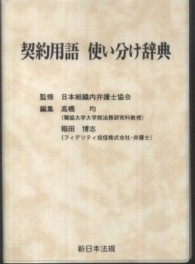Full Description
The march towards on-line and blended teaching—present before the Covid-19 pandemic—has been accelerated by it, and there is no going back. Students and staff may object, but the economic drive towards "greater productivity" will inevitably result in less face-to-face (f2f) instruction. Therefore, it is incumbent for those delivering this precious, in-person resource to make maximum use of time...which raises the question, "how"?
The second edition of Higher Education Computer Science offers some potential answers. It also addresses other questions, such as "why have f2f teaching at all?" "what is the purpose of f2f?" and "what is the appropriate balance between the two?" The first edition began to offer suggestions for optimising limited opportunities to get together with students.
Aligned with that, this unique new volume examines how to use the technology available to maximum advantage: For example, resources such as Moocs and other on-line instructional materials can provide invaluable pedagogic support. In addition, the book addresses 'problem-based learning,' using robotics in the teaching of programming, and a multidisciplinary approach to data science. Although it includes a chapter on distance learning, there is greater emphasis placed on the soft, transferable skills and employability skills that are best delivered in person. Further, the work provides several examples of putting theory into practice when teaching computer science at both undergraduate and postgraduate levels.
Written by experienced practitioners, each chapter tackles a particular teaching activity or topic within computing, presented in such a way that other practitioners can use. As such, this new volume will be an invaluable resource to those who want to protect and optimise in-person teaching.
Contents
Part 1: Approaches to Learning.- Changing minds: Multitasking in lectures.- Active learning in large lectures.- The flipped classroom.- Applying cognitive theory to the teaching of programming: Metaphors, robots and problem-based learning.- Distance learning: Lessons learned from a UK masters programme.- Academic integrity for computer science instructors.- Contextualisation in data science.- Part 2: Teaching examples and practice.- Using graphics to inspire failing students.- Best practices for teaching information systems modelling.- Promoting design thinking through knowledge maps: A case study in computer games design and development education.- Teaching fuzzy logic utilising innovative approaches.- Semi-automating the marking of a Java programming portfolio assessment: A case study from a UK undergraduate programme.- Part 3: Employability and group work.- The enterprise showcase experience.- Task versus process: A taxonomy for group projects.- Realising the threshold of employability in higher education.- Exploring the landscape of HE industrial placements within engineering and technology subjects. Observations of recruitment, graduate attributes and student experience.- Baseline skills - Scaffolding soft skills development within the curriculum.- Professionalism and online presence.- Postscript.








